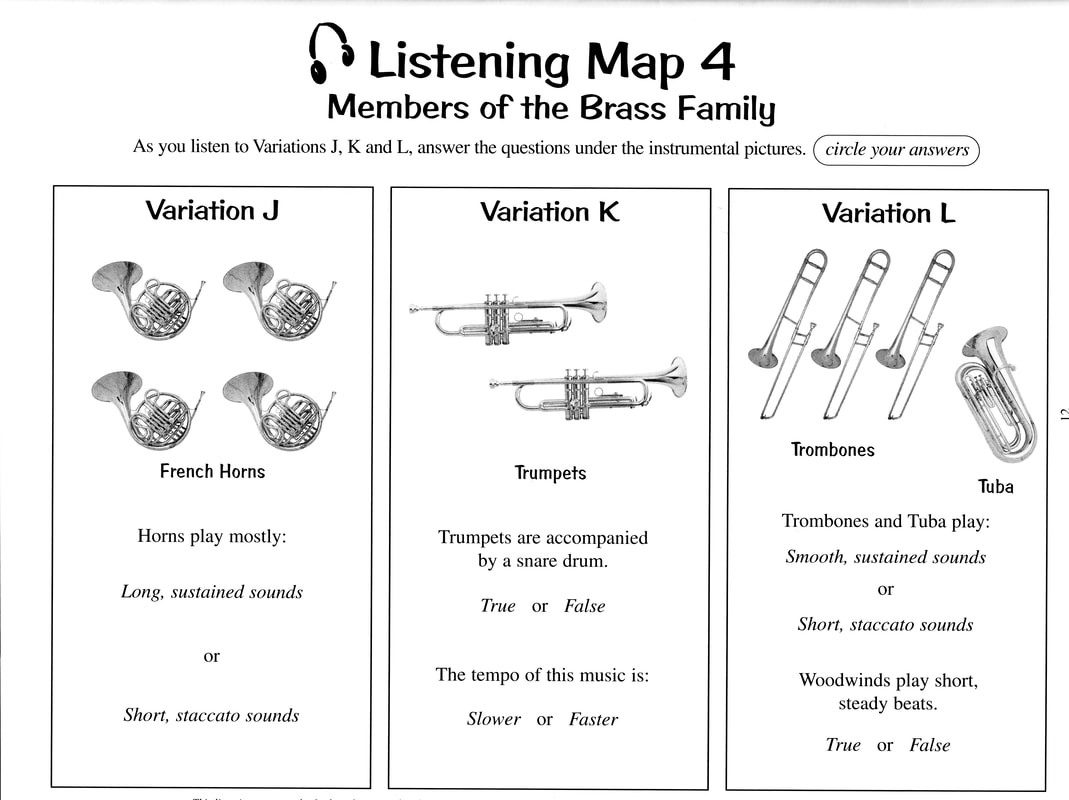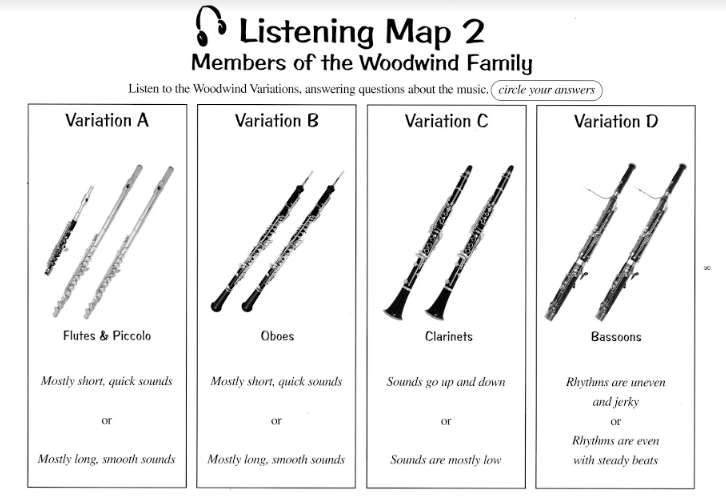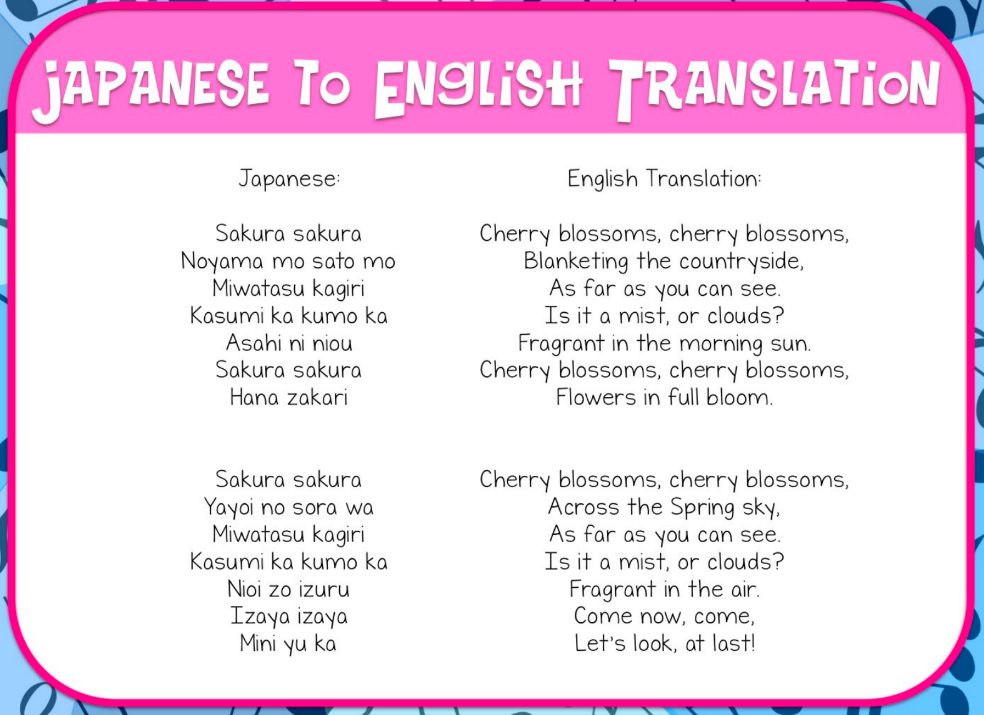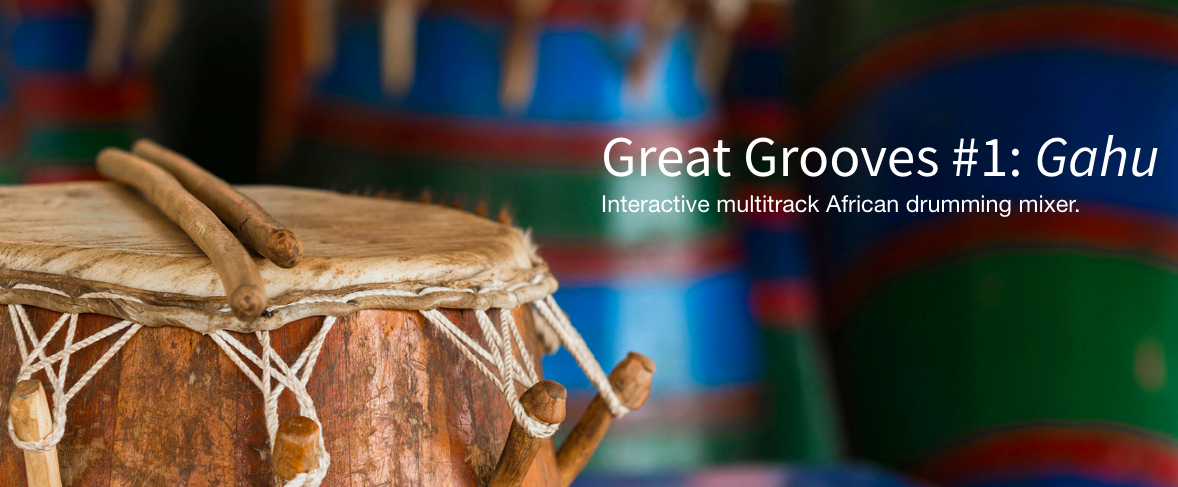Week 6/15-6/19
|
Dear Second Graders,
Congratulations! You've made it through 13 weeks of distance learning! I know it hasn't been easy but I'm proud of you. Although our sticker chart is still at school, I know it would definitely be filled up by now. In fact, you've earned more than one super fun music reward! I hope you enjoy these games and activities. Love, Ms. Sheridan PLAY: Young Person’s Guide Game After learning about the Young Person's Guide to the Orchestra for the last 4 weeks, you can now play the game! Follow Violet as she helps her uncle track down all the instruments of the Orchestra in the jungle! You need to allow Flash to run on your computer for this program to work. Ask your grown-up for help! PLAY: Incredibox! Back by popular demand, this music choice reward is always a favorite! Several of these versions of the game as free to play online. You will need to allow "flash" to run to use this program, so ask a grown up for help if you need it! DANCE: Let's Celebrate! Learn this dance and then try to get your family members to jump up and join you! Make a video of your dancing and share it with me at: [email protected] |
Week 12: 6/8-6/12
|
READ: You Matter
Christian Robinson is an author and illustrator. I follow him on Instagram and find his series called “Making Space” @theartoffun really engaging and moving. My children and I have watched and made art along with him. I highly recommend it! He released a new book a few days ago and it’s message is one that I want all of my students to hear. YOU MATTER! LISTEN & SING: Songs that bring us together There are so many things going on in the world around us right now. Many people are feeling worried, sad, angry or confused. These are all important feelings. Sometimes, these emotions can leave us feeling alone. One thing I know that can always help bring people together is music. Humans sing when they are happy. But, we also sing when we’re sad. Making music has a magical way of helping us share our feelings and find the words we need to express ourselves. It can make us feel united and strong. It has the power to lift us up and make us belong. You and your family may be expressing your feelings at home by making signs of gratitude and cheering on our essential workers helping to fight the pandemic. You may be protesting, marching or attending a vigil to show that you know Black Lives Matter. All of these actions are important tools for changing and strengthening our community. Throughout history, music has been the glue to bind communities together when they are unraveling. Each year at Pierce, we sing to celebrate the life of Martin Luther King Jr. to remind us of our constant fight for civil rights in this country. What we sing, unites us and makes us stronger. I have shared these songs and more in a playlist below. I encourage you to bring these songs into your homes. Listen and SING as a family and lift each other up. |
|
|
|
|
|
|
LEARN:
This week we will finish up our unit on the Orchestra by learning about the Percussion family! Percussion instruments are played by hitting, shaking or being scraped. In the Young Person’s Guide to the Orchestra, we will hear the final family of the Orchestra play both the theme and variation. How many percussion instruments to do see and hear being played? COLOR:
While you are listening to the Percussion family play the theme and variation, go ahead and color them all in using this worksheet. How many different percussion instruments do you see and hear being played? |
Theme:
Variation:
|
Week 11: 6/1-6/5
|
SING: “I am With You” by Olaf!
Listen to this beautiful new song by everyone's favorite snowman. Sing along with Olaf and think about all the people that you are missing. Call you family and friends and sing this song to them. It's a beautiful way to share how much you are missing them while also brightening their day and spreading joy. LEARN: Brass Family This week we are going to be learning about the Brass family. Many of these instruments may be familiar to you. Brass instruments make a very full and strong sound. But they can also be played softly and smoothly! Watch the introduction to the Brass family from Ms. Han. LISTEN: Young Person’s Guide to Orchestra This week, we are on to exploring where the Brass family fits in to Benjamin Britten's piece "The Young Person's Guide to the Orchestra". Listen here to the Brass theme and variation. Think about our pizzas and the flavor that each instrument adds to the party! ;) Brass Theme:
Brass Variation:
READ: Tubby the Tuba
We're going to hear a story about Tubby the Tuba. The tuba is a brass instrument so this is the perfect time to share one of my favorite music books! Listen carefully for the tuba and the other instruments in the orchestra. How many instruments can you count? |
COLOR:
While you are listening to all of these fun videos about the Brass family, color them in on this worksheet as you go! You do not need to make them their real color. You can color them in any way you like!
Your browser does not support viewing this document. Click here to download the document.
|
Week Ten: 5/26-5/29
|
SING:
Here is a new song for us to learn as we study the families of the Orchestra. You can learn all four verses by watching the video posted here. Focus on learning the Violin and Clarinet verses because we have been learning about the String family and the Woodwind family! LISTEN: Last week, we focused on the String family as we listened to the “Young Person’s Guide to the Orchestra” by Benjamin Britten. This week, we will focus on the Woodwind family! The members of the woodwind family are: Piccolo, Flute, Oboe, Clarinet, and Bassoon. Listen to these musicians talk about why they think their woodwind instrument is the best! Watch and listen to the THEME of our piece played by the Woodwinds. The theme in a piece of music means the 'big idea", just like it does in a book! Britten announces the theme in the very beginning of the piece with everyone playing. Then, each family gets a turn to play the theme alone.
Woodwinds Theme begins at :32 seconds
Woodwinds Variation
Now, listen to the Woodwind VARIATION. This means that you will hear the "big idea", but it will be a little different. You can use the listening map below as well! |
COLOR: Another great way to learn about all the members of the Woodwind family is to color them all in! Print out this coloring sheet for Woodwind family and have fun! I would highly recommend coloring your sheet while you are listening to the pieces listed above! |
Week Nine: 5/18-5/22
|
WATCH:
Last week, you had a chance to review some instruments in the Orchestra as you watched "The Remarkable Farkle McBride". This week, we will continue our work with the Orchestra by exploring a piece of music called, "A Young Person's Guide to the Orchestra", written by a composer named Benjamin Britten. He wrote this piece of music specifically to teach kids! Each family in the Orchestra has a turn to show their stuff, and each instrument in each family also gets a special moment to shine too! We will start this week by learning about the String Family. Watch an introduction to the Strings from Ms. Han and a video that tells you how each string instrument is played. LISTEN: We will now hear from individual members of the String family. First, we’ll hear from the violins, violas, cellos, and finally the big double bass. These are the official members of the string family, however for this set of variations, Britten has also included the harp. The harp has strings too, but these are always plucked, never played with a bow. The foot pedals are used to tighten or loosen the strings which change the pitches/notes. First watch and listen to the THEME. The theme in a piece of music means the 'big idea", just like it does in a book! Britten announces the theme in the very beginning of the piece with everyone playing. Then, each family gets a turn to play the theme alone. Next, listen to the Strings VARIATION. This means that you will hear the "big idea", but it will be a little different. You can use the listening map below as well! To hear the Strings Variation, being the video at 4:59! LISTEN:
"Zin! Zin! Zin! A Violin" is a great story for you this week because it introduces many instruments of the orchestra, including the violin! Listen and watch carefully to see if you can find all the string instruments that we’ve learned about so far. |
COLOR: Another great way to review all the members of the String Family is to color them all in. Print out this coloring sheet for the String Family and have fun! I would highly recommend coloring your sheet while you are listening to the pieces listed above.
Your browser does not support viewing this document. Click here to download the document.
|
Week Eight: 5/11-5/15

SING:
Two weeks ago we learned about the koto, and the tradition of Hanami or “flower viewing” when the cherry blossoms bloom in Japan in the spring. Read about the song “Sakura” and try singing it. Listen and sing along with the video as well. LEARN: Taiko (太鼓) means simply "drum" in Japanese. Taiko can also refer to a broader range of Japanese percussion instruments. This video tells us about the Taiko tradition on a remote Japanese island called Sodo. PLAY: I hope you remember the song “Suzume No Gakko” from music class! If not, here all the words to help you sing along with the recording. Chi chi pa pa, Chi pa pa! Su-zu -me no Gakko no Sen-sei wa. Mu-ch--io furi, furi, Chi pa pa, Chi chi pa pa, Chi pa pa! This is a song from Japan about a teacher (sensei) at a singing school (gakko) who is waving her baton or stick (muchi) which makes sound (furi, furi). He is teaching his students, the sparrows (suzume), to sing "chi chi pa pa." This song is often played as a hand clapping game. Make your own gestures and patterns with a family member to create a new game. LISTEN: We will be reviewing what we know about the families of the orchestra in the next few weeks. Enjoy this silly story about a boy called Farkle McBride as he searches for the perfect instrument to play. |
|
Week Seven: 5/4-5/8
|
Sing:
We learned the song, “Signs of Spring” last week. This week, Ms. Han and I made a video of us singing that song as a round. When you sing a round, everyone sings the same song, but different parts come in to sing at different times! Days grow longer warm with sun, Let's get out and have some fun! Bring your bat and glove and ball, Bikes and roller skates and all. Brisk the breeze and warm the rain, Plant your garden once again. Trees are greening, robins sing, These are certain signs of spring! Listen to us sing, and then sing along. You can try singing each part a few times. Teach it to a family member to sing it together, or maybe even find a friend on Zoom or Google Meet to try it out! MOVE: Body Percussion Follow along with the video of “Bim Bum” and try to clap, pat, and snap along! It starts off very slow but then begins to get faster. How far can you make it and still keep the beat? Can you sing at the same time? You'll need to practice this many times to get the hang of it! LISTEN & REFLECT: Listen to the song "Tritsch-Tratsch Polka" by Johann Strauss. (Tritsch-Tratsch means “chit chat” or talking at once!) You can listen to it as many times as you want. After you are done listening, print out the worksheet and fill it out. If you don't have a printer you can make your own work sheet based on the one shown below. I would love to see your work! Send it to me at: [email protected]
Your browser does not support viewing this document. Click here to download the document.
|
|
Week Six: 4/27-5/1
|
SING:
Signs of Spring is the perfect song to sing in the spring because things are changing all around us each day! The weather is warming up, the days are lighter for longer, the flowers are blooming and it makes me want to find my baseball glove and get outside to play! You are beginning to study Japan in Social Studies. April in Japan is a very special time and is celebrated with a festival called Hanami. Hanami, 花見, or in English "flower viewing", is a long-standing Japanese tradition of welcoming spring. Also known as the “cherry blossom festival,” this annual celebration is about appreciating the ever changing beauty in nature. People gather under blooming cherry blossoms for food, music, and friendship as they celebrate the passing beauty. Watch this performance of the song Sakura by Kasumi Watanabe. She is performing on a traditional Japanese instrument called the Koto. The koto is a cousin to the Guzheng from China which we learned about in music class when we were singing and celebrating Lunar New Year. They are both string instruments in the Zither family. CREATE: Do you like secret codes? I do! Use this worksheet of rhythm patterns to play your name or send a message to someone! Spell your name on a piece of paper. Find the rhythm on the chart for each letter of your name and write them down in order. Then, try to say and play the rhythm sentence that spells your name. You can spell all the names in your family too! Record yourself or send me your rhythm sentence so I can see your work: [email protected]
Your browser does not support viewing this document. Click here to download the document.

MOVE:
This song activity gives you a chance to work on your coordination and musical timing while having fun! The “Deteggtive” will lead you through the song showing you which beat is happening in the music. The picture here tells you what each egg means.
Follow along and try one color at a time. See if you can keep up and make every movement happen with the beat of the music. Then try to do two colors, and finally, try all three! If Level 2 seems pretty easy for you, challenge yourself with Level 3! |
|
Week Five: 4/21-4/24
|
SING: Hand washing song
Warm up your voices by singing the song “Tue Tue” from last week! Try this new song about washing your hands. Make hand washing fun by playing and singing it background you wash your hands :) PLAY: Here’s a song from Ghana called “Che Che Kule”. Watch the video and echo the lead singer. After you have learned the song, try playing one of the instrument parts while singing. (Shaker, xylophone, rhythm sticks, or drums) Here are some alternatives that you can find in your home Shaker: macaroni pasta, rice or beans in a can or a ziplock bag Xylophone: maybe a piano? Rhythm sticks: any 2 things you can safely hit together Drums: a tupperware container, bucket, a table or the floor EXPERIMENT: Have you ever played around with a few glasses full of water and noticed that they make different pitches? Depending on how much water is in your glass, you can play any note on the scale! Watch this video to learn how to make your own Water Xylophone at home. Once you can play a scale or a melody you know with your water xylophone please send me a video to share your learning! |
|
Week Four: 4/13-4/17
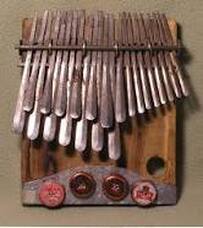
PLAY:
Find your homemade drum or shaker and get ready to practice your rhythm skills using this video. In the beginning, you can clap or speak the rhythm patterns. In the second half of the video, they will play a mystery pattern for you to decode. If you are using a drum or shaker, try to find the rhythm pattern. If you are using a piano, try to find the rhythm AND melody! SING: Remember the song Tue Tue from music class? This is a song in the Ashanti language and it comes from Ghana. The meaning of the words are, “Sorry man, sorry. This small boy has made you fall flat”. Sing along with this recording and try to make up your own movements to match the rhythm of the song. Did you hear some instruments accompanying the singers? One instrument I heard is an mbira or a kalimba. These are sometimes called thumb pianos. Watch the video here and learn all about them! EXPLORE: You’ve been learning a lot about percussion instruments from Africa. Take some time to explore some beat making with an app called Groove Pizza You can explore different grooves in styles like Jazz, Rock, Bembe and Trap. You can also make your own and share the file with me! |
|
Week Three: 4/6-4/10
|
SING: Why Mosquitoes Buzz in People’s Ears
Click the link above to hear all of the songs from our mini-musical and practice singing along at home! This week, try singing along to “Why Won’t The Agamas speak To Us?” Why won’t the agamas speak to us? They’re acting so ridiculous! Planning a plot so mischievous, we must away and hide! Why won’t the agamas speak to us? They’re making such an awful fuss! There’s nothing for us to discuss, we must away and hide! LEARN & PLAY: Watch this video and learn about the Djembe and the Cajon. The djembe is one of many drums from Africa. Remember when I showed you how to use a bucket or tupperware container for drumming at home? Can you find a way of making 3 different sounds on your own instrument? Try to play the pattern that Farai Malianga demonstrates in the video. Can you say and play what he does to communicate "the king is coming"? MOVE: Rujeko Dumbutshena is a dancer from Zimbabwe. Zimbabwe is a country in Africa. Find it on the map in the picture below. Ms. Dumbutshena guides you through some basic dance moves in this video. Follow along at home and dance with them as you listen to Farai Malianga play the djembe! If you are looking for more dancing in your day, try this GoNoodle dance for "Can't Stop the Feeling". Get your family to join in and have fun! |
|
Week Two: 3/30-4/3
|
SING: Why Mosquitoes Buzz in People’s Ears
Click the link above to hear all of the songs from our mini-musical and practice singing along at home! PLAY and MOVE: Drum #1 and Dance Practice these parts along with "Funga Alafia" when you sing! Try one at a time and add any other parts you remember from music class. CREATE: Making a Maraca Find some musical instruments around your house to play along with our songs from “Mosquitoes Buzz”. Do you have a drum, shakers, or a triangle? If not, you can make one! I share some things I'm using at home in the video here. |
|
Week One: 3/23-3/27

SING: Ask your child to teach you a song from music class! There are many they know well enough to teach. “Funga Alafia” is a greeting songs with movements that the whole family can learn. We will send the songs for “Why Mosquitoes Buzz In People’s Ears” as soon as we can access our classrooms.
MOVE: An essential musical concept for 2nd grade is Steady Beat. As you listen to music and sing songs around the house, encourage your child to show you the beat, or pulse, by swaying, patting their legs, walking around the house, etc. LISTEN: Kpanlogo and Gahu Music of Ghana Our students were studying Ghana and preparing for their musical “Why Mosquitoes Buzz in People’s Ears”. They were learning about a few traditional styles of Ghanian music as well. The links above will bring you to a site where your child can hear individual instruments and the entire group performing in these two styles. Encourage them to play along with as many parts as they can. If you don’t have a drum, use the table! PLAY: Rhythm Composition Using the website Music Play Online and the username and password pasted below, your child can review quarter note, eighth note and rest rhythms while creating a composition and hearing it played by different instruments. Have them try the djembe drum from Ghana as they work and play along as well! |
Proudly powered by Weebly


